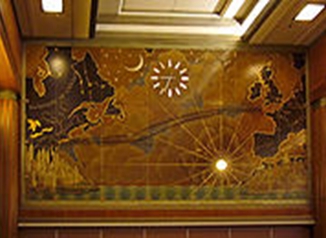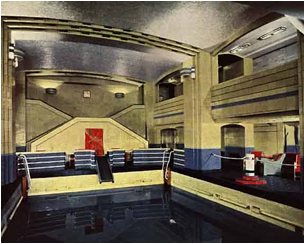The History Behind the Queen Mary
 At the time her keel was laid on January 31st 1931 by the John Brown & Co. shipyard, the Queen Mary was simply known as Job #534. Due to be launched in May of 1932 the world economy had other plans. The great depression put the ship on hold while the Cunard line sought government funding. A deal was reached in 1934 which merged England’s two great ship building dynasties. So it was on September 26th 1934 that Cunard/White Star lines launched what would become one of the most famous ships in history. Over the next two years she would be fitted out with three classes of accommodations, two swimming pools, three nurseries, elevator fore, aft and amidships along with entertainment and salons for all three classes.
At the time her keel was laid on January 31st 1931 by the John Brown & Co. shipyard, the Queen Mary was simply known as Job #534. Due to be launched in May of 1932 the world economy had other plans. The great depression put the ship on hold while the Cunard line sought government funding. A deal was reached in 1934 which merged England’s two great ship building dynasties. So it was on September 26th 1934 that Cunard/White Star lines launched what would become one of the most famous ships in history. Over the next two years she would be fitted out with three classes of accommodations, two swimming pools, three nurseries, elevator fore, aft and amidships along with entertainment and salons for all three classes.
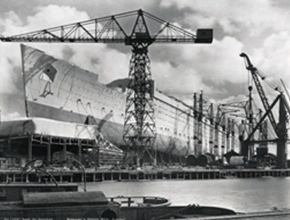
 On May 27th 1936 after 20 months of sea trials The Queen Mary set sail on her maiden voyage. Some thought she would try to capture the coveted Blue Riband (the award for fastest crossing of the Atlantic) but thick fog prevented the attempt. The Queen Mary would go on to win the prize twice from her arch rival, the French ship Normandie until the SS United States claimed it in 1952 who would not relinquish the title until the Riband was removed from competition.
On May 27th 1936 after 20 months of sea trials The Queen Mary set sail on her maiden voyage. Some thought she would try to capture the coveted Blue Riband (the award for fastest crossing of the Atlantic) but thick fog prevented the attempt. The Queen Mary would go on to win the prize twice from her arch rival, the French ship Normandie until the SS United States claimed it in 1952 who would not relinquish the title until the Riband was removed from competition.
 When war broke out in Europe The Queen May was safely docked in New York harbor. She would sit idle for the next year while London decided what role she would play. It was later decided that she would be most effective as a troop transport. The Queen Mary and The Queen Elizabeth (also in NY) both underwent war time conversions. They were equipped with anti aircraft guns; their furnishings were removed and replaced with bunks and hammocks, medical stations were installed and their dining rooms converted to mess halls and hospital areas. The Queen Mary’s sleek black paint was replaced with a dull flat gray to help camouflage her from U-boats and patrolling aircraft. Her speed would become her greatest defense however.
When war broke out in Europe The Queen May was safely docked in New York harbor. She would sit idle for the next year while London decided what role she would play. It was later decided that she would be most effective as a troop transport. The Queen Mary and The Queen Elizabeth (also in NY) both underwent war time conversions. They were equipped with anti aircraft guns; their furnishings were removed and replaced with bunks and hammocks, medical stations were installed and their dining rooms converted to mess halls and hospital areas. The Queen Mary’s sleek black paint was replaced with a dull flat gray to help camouflage her from U-boats and patrolling aircraft. Her speed would become her greatest defense however.
 The Queen Mary traveled from Australia and Singapore, to India and South Africa carrying troops of the commonwealth. After America entered the war she began transporting US service personnel around the world also. To this day She holds the record for the most passengers carried in a single crossing at 16,000 souls. Not only did The Queen Mary ferry allied troops during the war she also carried German and Italian prisoners of war to US and Canadian prison camps. These were transported mainly in the cargo hold and lower sections until late in the war when they were allowed on deck.
The Queen Mary traveled from Australia and Singapore, to India and South Africa carrying troops of the commonwealth. After America entered the war she began transporting US service personnel around the world also. To this day She holds the record for the most passengers carried in a single crossing at 16,000 souls. Not only did The Queen Mary ferry allied troops during the war she also carried German and Italian prisoners of war to US and Canadian prison camps. These were transported mainly in the cargo hold and lower sections until late in the war when they were allowed on deck.
 During one of these eastbound trips one of the worst tragedies of her career took place. The ships of any convoy would sail using a zig zag pattern to throw off the aim of any trailing U-boats. During one of these turns the cruiser HMS Curacoa inadvertently turned into the path of The Queen Mary and
During one of these eastbound trips one of the worst tragedies of her career took place. The ships of any convoy would sail using a zig zag pattern to throw off the aim of any trailing U-boats. During one of these turns the cruiser HMS Curacoa inadvertently turned into the path of The Queen Mary and
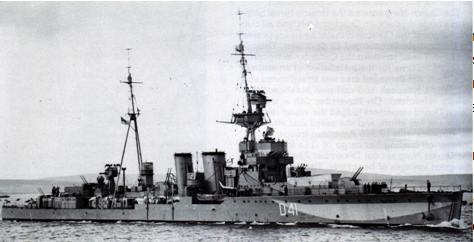 was cut in half by the massive liner. Over 300 of her crew were killed and The Queen Mary, under orders not to stop for any reason continued on to port without even slowing down. She was given a hasty temporary fix and sent back to New York for dry docking and permanent repairs. Her speed was so great and her capacity so large that Adolf Hitler placed a $250,000 bounty on her which helped solidify her nickname as the “Gray Ghost”. From 1940 thru 1945 she transported 800,000 people while traveling 600,000 nautical miles. Then in 1946 she carried 22,000 war brides and their children from Europe to North America.
was cut in half by the massive liner. Over 300 of her crew were killed and The Queen Mary, under orders not to stop for any reason continued on to port without even slowing down. She was given a hasty temporary fix and sent back to New York for dry docking and permanent repairs. Her speed was so great and her capacity so large that Adolf Hitler placed a $250,000 bounty on her which helped solidify her nickname as the “Gray Ghost”. From 1940 thru 1945 she transported 800,000 people while traveling 600,000 nautical miles. Then in 1946 she carried 22,000 war brides and their children from Europe to North America.
 On September 27th 1947 the ship was transferred back to Cunard and underwent refitting to transform her back to her grand state of luxury. In 1958 The Queen Mary was upgraded with stabilizers but her future was beginning to dim. She was only making cruises to the Canary Islands and the Bahamas periodically due to the fact that she had no central air conditioning or outdoor pools. Air travel was becoming economical, safe and above all fast and this contributed greatly to the decline in liner travel. In May of 1965, an employee strike cost Cunard millions of dollars and doomed the great ships career. Bids were then opened and received for the sale of the Queen Mary with the California City of Long Beach winning out. So it was on September 16, 1967 that the grandest ship to sail the oceans made her last scheduled crossing of the Atlantic.
On September 27th 1947 the ship was transferred back to Cunard and underwent refitting to transform her back to her grand state of luxury. In 1958 The Queen Mary was upgraded with stabilizers but her future was beginning to dim. She was only making cruises to the Canary Islands and the Bahamas periodically due to the fact that she had no central air conditioning or outdoor pools. Air travel was becoming economical, safe and above all fast and this contributed greatly to the decline in liner travel. In May of 1965, an employee strike cost Cunard millions of dollars and doomed the great ships career. Bids were then opened and received for the sale of the Queen Mary with the California City of Long Beach winning out. So it was on September 16, 1967 that the grandest ship to sail the oceans made her last scheduled crossing of the Atlantic.
 The Queen Mary arrived in Long Beach on December 9th, 1967. The City had plans for turning her into a floating hotel, museum and tourist attraction. The transformation began in 1969 with the lower sections of the ship below “R” deck being gutted along with all the boilers, forward engine room and stabilizers being removed. The hotel rooms would be located on decks “M” thru “B”; sections of the promenade deck were turned into restaurants and her passenger lounges became retail space.
The Queen Mary arrived in Long Beach on December 9th, 1967. The City had plans for turning her into a floating hotel, museum and tourist attraction. The transformation began in 1969 with the lower sections of the ship below “R” deck being gutted along with all the boilers, forward engine room and stabilizers being removed. The hotel rooms would be located on decks “M” thru “B”; sections of the promenade deck were turned into restaurants and her passenger lounges became retail space.
 In May of 1971 the ship opened in her new capacity with Jacques Cousteau’s Museum of the Sea, as her main attraction. Initial sales were adequate but fell sharply after a few months which caused this exhibit to close in only a few years time. The decline worried the City to the point that they turned to the Hyatt Corp. to reenergize sales. Hyatt only operated the ship from 1974 to 1980 after which the Jack Wrather Corp. gave it a go. Then in 1988 Long Beach thought it had found the answer when Disney bought out Wrather and assumed the lease.
In May of 1971 the ship opened in her new capacity with Jacques Cousteau’s Museum of the Sea, as her main attraction. Initial sales were adequate but fell sharply after a few months which caused this exhibit to close in only a few years time. The decline worried the City to the point that they turned to the Hyatt Corp. to reenergize sales. Hyatt only operated the ship from 1974 to 1980 after which the Jack Wrather Corp. gave it a go. Then in 1988 Long Beach thought it had found the answer when Disney bought out Wrather and assumed the lease.
 Disney all but ignored the Queen Mary during its tenure in operating the ship. They did have plans to develop a theme park adjacent to the ship, however later decided to build Disney Sea in Japan. The center piece for their new Asian theme park was a replica of the Queen Mary. Disney then seemed to just abandon the ship until 1992 when they relinquished the lease. The ship closed its doors two months later and everyone thought that it was the end for this historic piece of history.
Disney all but ignored the Queen Mary during its tenure in operating the ship. They did have plans to develop a theme park adjacent to the ship, however later decided to build Disney Sea in Japan. The center piece for their new Asian theme park was a replica of the Queen Mary. Disney then seemed to just abandon the ship until 1992 when they relinquished the lease. The ship closed its doors two months later and everyone thought that it was the end for this historic piece of history.
 The ship had been closed for a year when the RMS Foundation stepped up and signed a 5 year lease with the City and reopened the tourist areas. It wouldn’t be until 1995 that the hotel would reopen. Today Save the Queen Corp runs the ship with plans, as everyone else had, to refurbish the ship, build a “city walk” style resort shared with Carnival Cruise lines and include marina, hotels and restaurants.
The ship had been closed for a year when the RMS Foundation stepped up and signed a 5 year lease with the City and reopened the tourist areas. It wouldn’t be until 1995 that the hotel would reopen. Today Save the Queen Corp runs the ship with plans, as everyone else had, to refurbish the ship, build a “city walk” style resort shared with Carnival Cruise lines and include marina, hotels and restaurants.
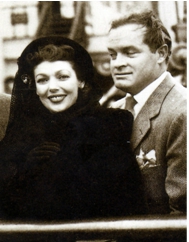
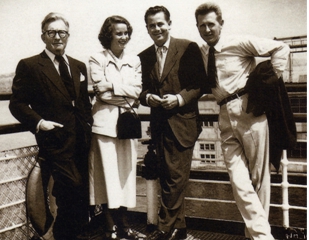
 When the Queen Mary sailed the oceans she was host to many Hollywood stars, royalty and political figures. She was part of history in many ways; Winston Churchill even signed the D-Day invasion orders while in transit on board the ship. Today she is on the Register of Historic Places and is the last remaining example of pre-WWII transatlantic liners. Her Art Deco décor calls one to an era passed when things were at once simpler and more complex. A time when giants prowled the sea and men rode astride their iron skin. I believe it is for these reasons that The Queen Mary remains home to many of her past guests, those who, although dead, still remember their time aboard this Grand Lady of the Seas.
When the Queen Mary sailed the oceans she was host to many Hollywood stars, royalty and political figures. She was part of history in many ways; Winston Churchill even signed the D-Day invasion orders while in transit on board the ship. Today she is on the Register of Historic Places and is the last remaining example of pre-WWII transatlantic liners. Her Art Deco décor calls one to an era passed when things were at once simpler and more complex. A time when giants prowled the sea and men rode astride their iron skin. I believe it is for these reasons that The Queen Mary remains home to many of her past guests, those who, although dead, still remember their time aboard this Grand Lady of the Seas.
